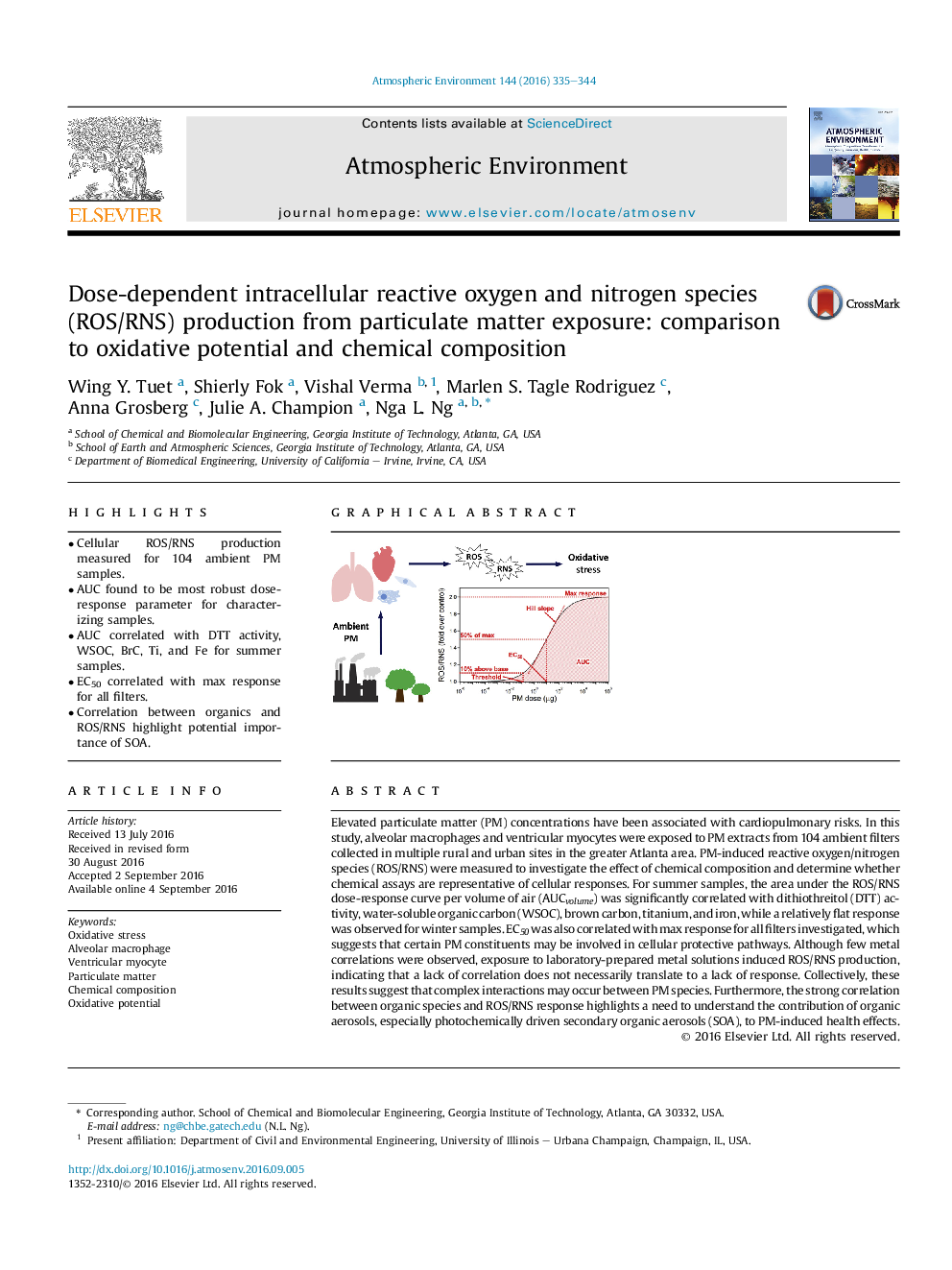| کد مقاله | کد نشریه | سال انتشار | مقاله انگلیسی | نسخه تمام متن |
|---|---|---|---|---|
| 6335701 | 1620330 | 2016 | 10 صفحه PDF | دانلود رایگان |

- Cellular ROS/RNS production measured for 104 ambient PM samples.
- AUC found to be most robust dose-response parameter for characterizing samples.
- AUC correlated with DTT activity, WSOC, BrC, Ti, and Fe for summer samples.
- EC50 correlated with max response for all filters.
- Correlation between organics and ROS/RNS highlight potential importance of SOA.
Elevated particulate matter (PM) concentrations have been associated with cardiopulmonary risks. In this study, alveolar macrophages and ventricular myocytes were exposed to PM extracts from 104 ambient filters collected in multiple rural and urban sites in the greater Atlanta area. PM-induced reactive oxygen/nitrogen species (ROS/RNS) were measured to investigate the effect of chemical composition and determine whether chemical assays are representative of cellular responses. For summer samples, the area under the ROS/RNS dose-response curve per volume of air (AUCvolume) was significantly correlated with dithiothreitol (DTT) activity, water-soluble organic carbon (WSOC), brown carbon, titanium, and iron, while a relatively flat response was observed for winter samples. EC50 was also correlated with max response for all filters investigated, which suggests that certain PM constituents may be involved in cellular protective pathways. Although few metal correlations were observed, exposure to laboratory-prepared metal solutions induced ROS/RNS production, indicating that a lack of correlation does not necessarily translate to a lack of response. Collectively, these results suggest that complex interactions may occur between PM species. Furthermore, the strong correlation between organic species and ROS/RNS response highlights a need to understand the contribution of organic aerosols, especially photochemically driven secondary organic aerosols (SOA), to PM-induced health effects.
251
Journal: Atmospheric Environment - Volume 144, November 2016, Pages 335-344